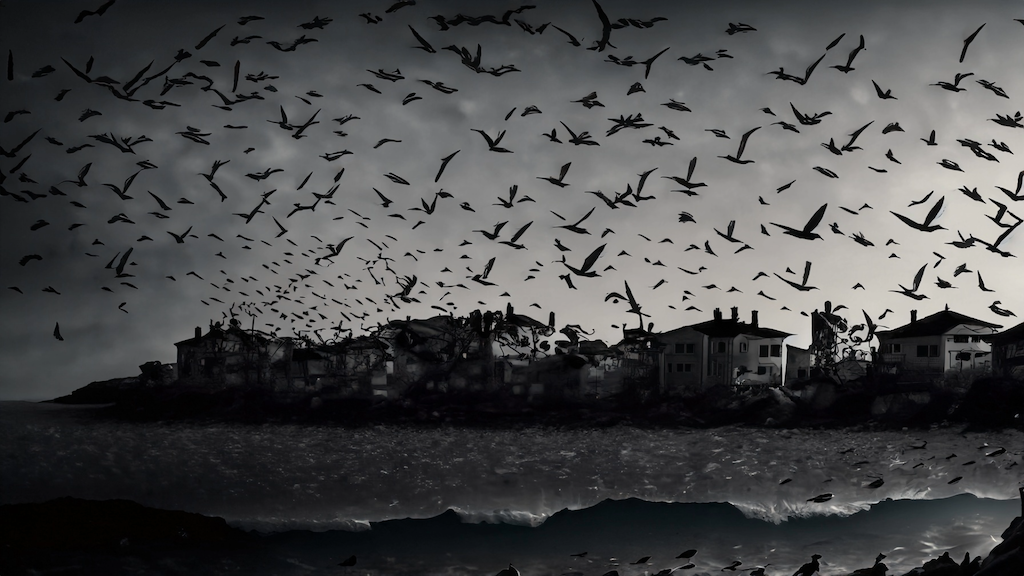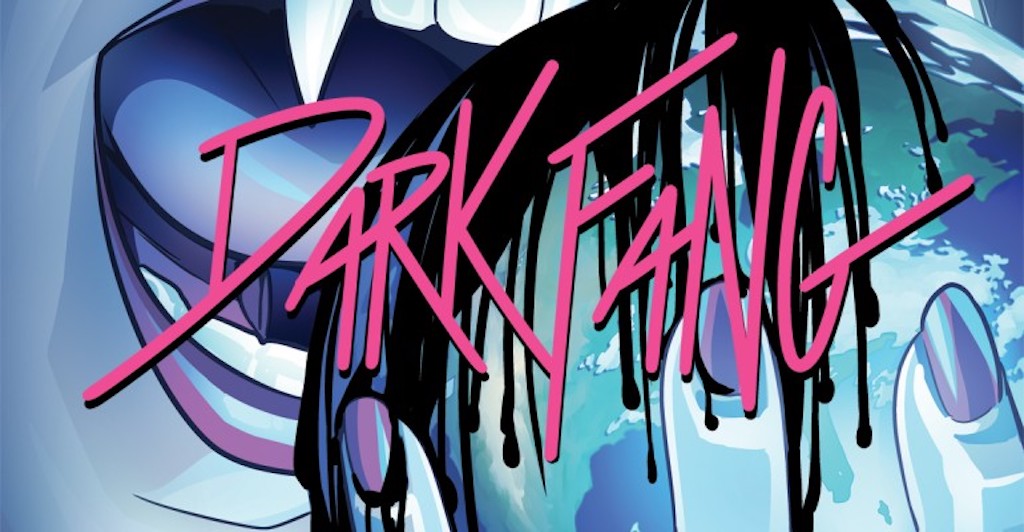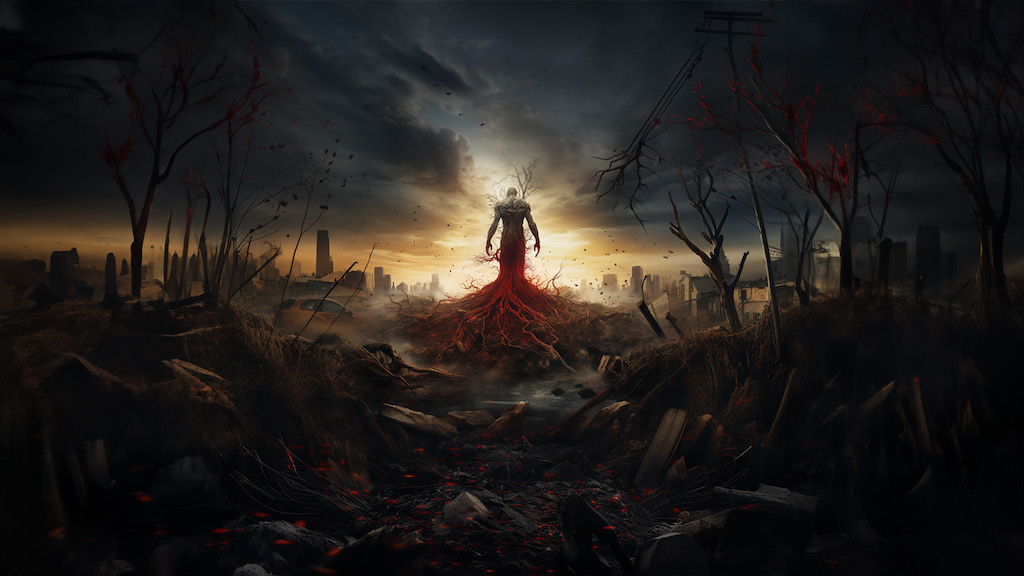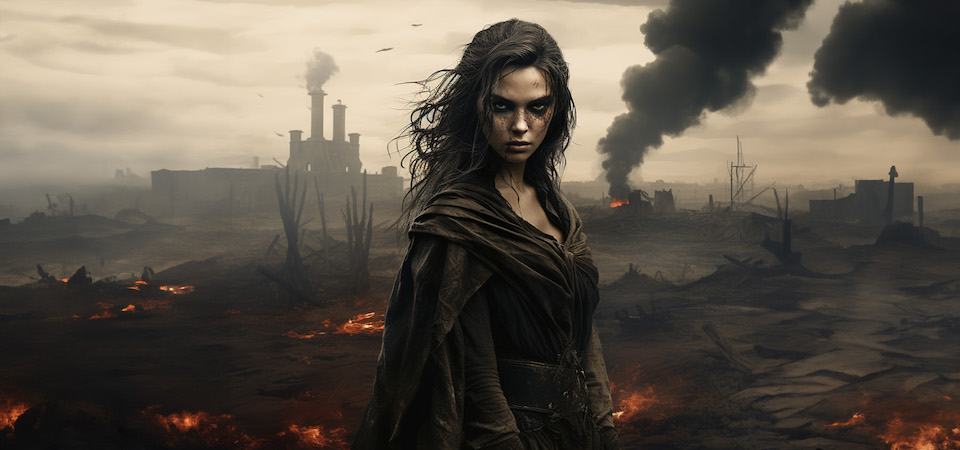Since Godzilla crawled out of the ocean in 1954, a monstrous consequence of the atomic age, ecohorror has given modern audiences an imaginative way to grapple not only with our primal fear of nature — but also with our complicated feelings about humanity’s impact on the environment.
This subgenre of horror, in which people face the wrath of nature and its emissaries, has never been more popular — driven in large measure by climate change anxiety and showcase titles such as the hit video game and HBO series The Last of Us.
For many, ecohorror offers a safe outlet for our tangled and difficult feelings about climate change. The heroine of ecohorror comic Dark Fang, for example, sets out to solve the fossil fuel problem — or at least avenge beaches blighted by an oil spill — by attacking oil company CEOs, said Brianna Anderson, a Marion L. Brittain Postdoctoral Fellow in the School of Literature, Media, and Communication.
“Ecohorror is great at expressing the rage and fear that people have about environmental issues, at the inadequacy of contemporary environmental movements,” Anderson said. “In the 1980s, we thought everything would be okay if we recycled, right? But now we know that’s absurd, that it’s not even close.”
Studying ecohorror and teaching Georgia Tech students why such stories are relevant to their futures as engineers, computer scientists, economists, or public policy leaders is all in a day’s work for Anderson and other LMC and School of Modern Languages scholars.
They say these stories can help Tech’s future leaders understand that human carelessness, hubris, narcissism, and greed have not only been the backstory for Godzilla and all his ecohorror cousins, but for many of the real technological disasters that have befallen humanity and the environment.

A Sin Against Nature
In the predawn hours of Aug. 18, 1961, thousands of disoriented and dying sea birds descended on two towns near Monterey Bay, California, slamming into homes and crashing through windows in the darkness. The few residents who ventured out were quickly driven back inside by birds diving at their flashlights. When sunrise came, a shaken township emerged from their homes to a landscape littered with dead and dying birds, the air thick with the stench of regurgitated fish.
A newspaper’s coverage of the event caught the attention of director Alfred Hitchcock, who went on to use it as part of the inspiration for his film The Birds.
It would take scientists nearly 40 years to uncover that a toxic algae bloom — likely triggered by leaking septic tanks built amid a housing boom — was responsible for the bizarre event. Hitchcock famously omitted any such backstory from The Birds, leaving out the key aspect of human culpability inherent in most ecohorror.
“There’s always a sin against nature for which the characters are being punished,” said Anderson, who has taught undergraduate courses on ecohorror in film and literature and recently published an article in Gothic Nature on Dark Fang.
Still, The Birds has become a classic of ecohorror, deeply enmeshed in our culture along with film franchises such as Jaws and Jurassic Park, bestselling novels including Scott Smith’s The Ruins and Jeff VanderMeer’s Annihilation, and the popular game-turned-hit-streaming-series The Last of Us.

Fear of Nature — and of Ourselves
Of course, these stories aren’t new.
“Our fears about nature’s power — its indifference to human suffering — are reflected in literature as far back as The Odyssey and The Epic of Gilgamesh,” said Carol Senf, professor in the School of Literature, Media, and Communication at Georgia Tech.
“We’ve cocooned ourselves against the natural world using technology,” Senf said. “Films and literary works like Jaws, Cujo, and The Birds express our fears about what happens when nature threatens or destroys that cocoon.”
Dark Fang similarly expresses the anger and fear many feel over environmental injustice in a particularly creative way, Anderson said. She pointed out that we are in the Anthropocene — an age in which human activity is the dominant influence on climate and the environment. Stories like these offer an outlet for the fear, anger, powerlessness, and frustration people feel when they think about the catastrophic implications of climate change.
“It shows how those injustices are intermeshed in complex ways with capitalism, colonialism, and patriarchy — and Dark Fang gives us this fantasy of a woman fighting back.”
For a more mainstream example of the intertwinement of colonialism, capitalism, and patriarchy in ecohorror, Senf and others point to Michael Crichton’s novel Jurassic Park and the films it inspired. Character Ian Malcolm sums it all up when he remarks in the 1993 film, “What you call discovery, I call the rape of the natural world.” And while you might not spend the film cheering for the T-rex, it probably felt satisfying to see the characters responsible dispatched in bloody fashion.

‘Sporror’ and Infectious Plants
Ecohorror films and literature also frequently give expression to anger and frustration at other human failings, from intolerance and ignorance to disrespect and disregard for other cultures. Anderson mentioned The Ruins, a 2008 film in which American tourists intrude upon Mayan ruins over the protests of indigenous people — and find themselves attacked by killer plants.
The characters in these stories are not always directly responsible for their misfortune, though.
For instance, in The Last of Us, the cordyceps fungus mutates, possibly due to climate change, spawning a zombie plague that destroys most of humanity. Like the titular creatures in The Birds, the fictional fungus in The Last of Us is inspired by real life: the cordyceps family of fungi, some of which infect and control the behavior of insects. While the fungus is not the direct consequence of the characters’ actions, it acts as an agent of nature that restores the natural balance — by wiping out humanity.
The game and follow-on series came to popularity amid the height of the Covid-19 pandemic, adding another dimension to the story, said Associate Professor of Japanese Studies Amanda Weiss. Weiss is also the editor of Georgia Tech’s Hivemind: Global Speculative Fiction, a digital magazine based out of the School of Modern Languages, and a 2018 graduate of the Clarion Science Fiction and Fantasy Writers' Workshop.
“Sporror evokes our fear of contamination, as well as our fear of what happens when our interactions with nature lead to disease,” Weiss said. “It’s not surprising that we’re seeing a surge in this subgenre’s popularity both during and after the pandemic.”

When Humanity is the ‘Real’ Villain
Dina Khapaeva, professor in the School of Modern Languages, said that over the past 30 years, we have entered a period of “anti-humanism” in popular culture, and ecohorror plays a role.
“Ecohorror shows humanity as a kind of infestation, as a pest, and a threat to the earth,” Khapaeva said. “So when we watch a film like War for the Planet of the Apes, in which humanity is destroyed, the audience is invited to celebrate the end of humanity for the benefit of restoring nature.”
This narrative, Khapaeva said, is a problem in cultures where dehumanization on the screen, coupled with the idea that there is something positive in the destruction of people, can bleed into politics, as she argues it has in Russia under President Vladimir Putin.
“In Western culture, this trend remains in the realm of fantasy and popular culture. But in Putin’s Russia, anti-humanist attitudes are getting transferred into politics and injected into political decisions,” she said.
Ecohorror as a Call to Action
It’s not surprising, as Anderson notes, that bleak endings are common in the genre. (Note: Dark Fang spoilers ahead.) For instance, Dark Fang’s heroine is destroyed with a nuclear warhead, to the delight of the story’s oil industry villains.
More “hopeful” ecohorror endings often occur only after great devastation. Films such as Snowpiercer and The Day After Tomorrow end with only a few survivors emerging, blinking, from their hiding places to find that — after a terrible disaster — nature has healed itself.
Endings like this are terrifying and the fictional human toll undeniable, but we can write a different one, Anderson says.
“I can’t think of a better place than Georgia Tech to teach these stories,” said Anderson. “Students are eager to discuss climate change and these other issues, and ecohorror is the perfect vehicle to help tomorrow’s tech leaders imagine solutions and drive positive change in the real world.”
If you’re looking for a good ecohorror read or watch this Halloween, check out the additional recommendations below from contributors:
Film Recommendations
- Them! (1954) - Directed by Gordon Douglas
- Kingdom of the Spiders (1977) - Directed by John "Bud" Cardos
- Stalker (1982) - Directed by Andrei Tarkovsky (Original Title: Сталкер)
- Arachnophobia (1990) - Directed by Frank Marshall
- The Blackout (2019) - Directed by Egor Baranov (Original Title: Аванпост)
- Troll (2022) - Directed by André Øvredal (Original Title: Trolljegeren 2)
- Cocaine Bear (2023) - Directed by Elizabeth Banks
- The Host (2006) - Directed by Bong Joon-Ho (Original Title: 괴물)
- Snowpiercer (2013) - Directed by Bong Joon-Ho (Original Title: 설국열차)
Novels, Short Stories, and Comics
- "The Wendigo" by Algernon Blackwood (1910)
- Seven Scary Stories About Frightening Fungi by various authors (2023)
- Mexican Gothic by Sylvia Moreno-Garcia (2020)
- "Come Into My Cellar" by Ray Bradbury (1957)
- Roadside Picnic by Arkady and Boris Strugatsky (1972, Original Title: Пикник на обочине)
- Annihilation by Jeff VanderMeer (2014)
- Farmhand (comic) by Rob Guillory (First published in 2018)
By Stephanie N. Kadel
Ivan Allen College of Liberal Arts
